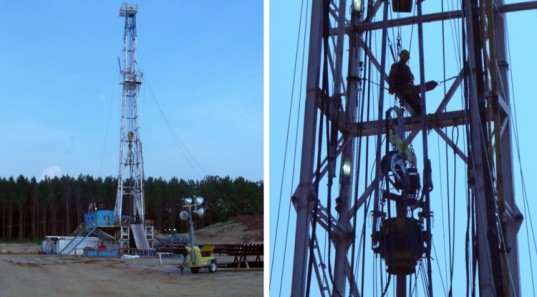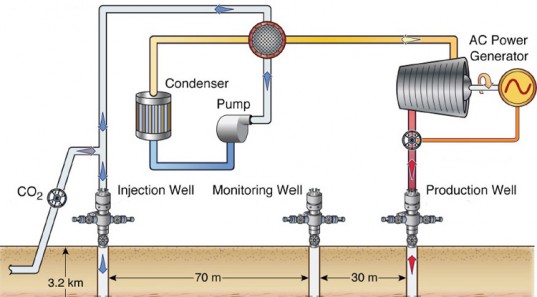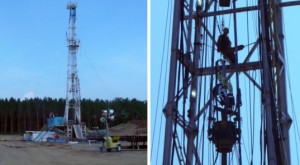It’s a beautiful thing when innovators take two problems and turn them into one solution. That’s the goal of a team of scientists out of Lawrence Berkeley National Laboratory who believe they can sequester carbon dioxide pollution while simultaneously using it to generate renewable energy. The project, which recently received a $5 million grant from the Department of Energy, would inject carbon dioxide that would otherwise be released into the atmosphere deep into the earth, where the temperature is 125 degrees Celsius. The gas would become “supercritical” at this temperature, taking on some liquid properties. It would then be pulled up and fed into a turbine that converts heat into electricity.

The CO2 in the system is reused; however, in each cycle some of the gas would be captured within the earth’s crust — which is precisely the idea.
The project’s raison d’etre is two-fold: First, by producing energy it recuperates some of the daunting costs of storing carbon underground to alleviate climate change. Second, it could offer an improvement over using water to capture the earth’s heat for energy. Water is a life-giving substance, whereas carbon is at this point a life-threatening pollutant; yet some of each is lost in each cycle of power production. As an added bonus, some laboratory studies suggest that supercritical CO2 may be a better medium to translate the earth’s heat into electricity.

But concrete results are a long way off: The first step is designing a turbine that can handle the unusual material — something the government researchers will look to Ohio’s Echogen Power Systems to do.

 Follow
Follow